Palace of the Parliament
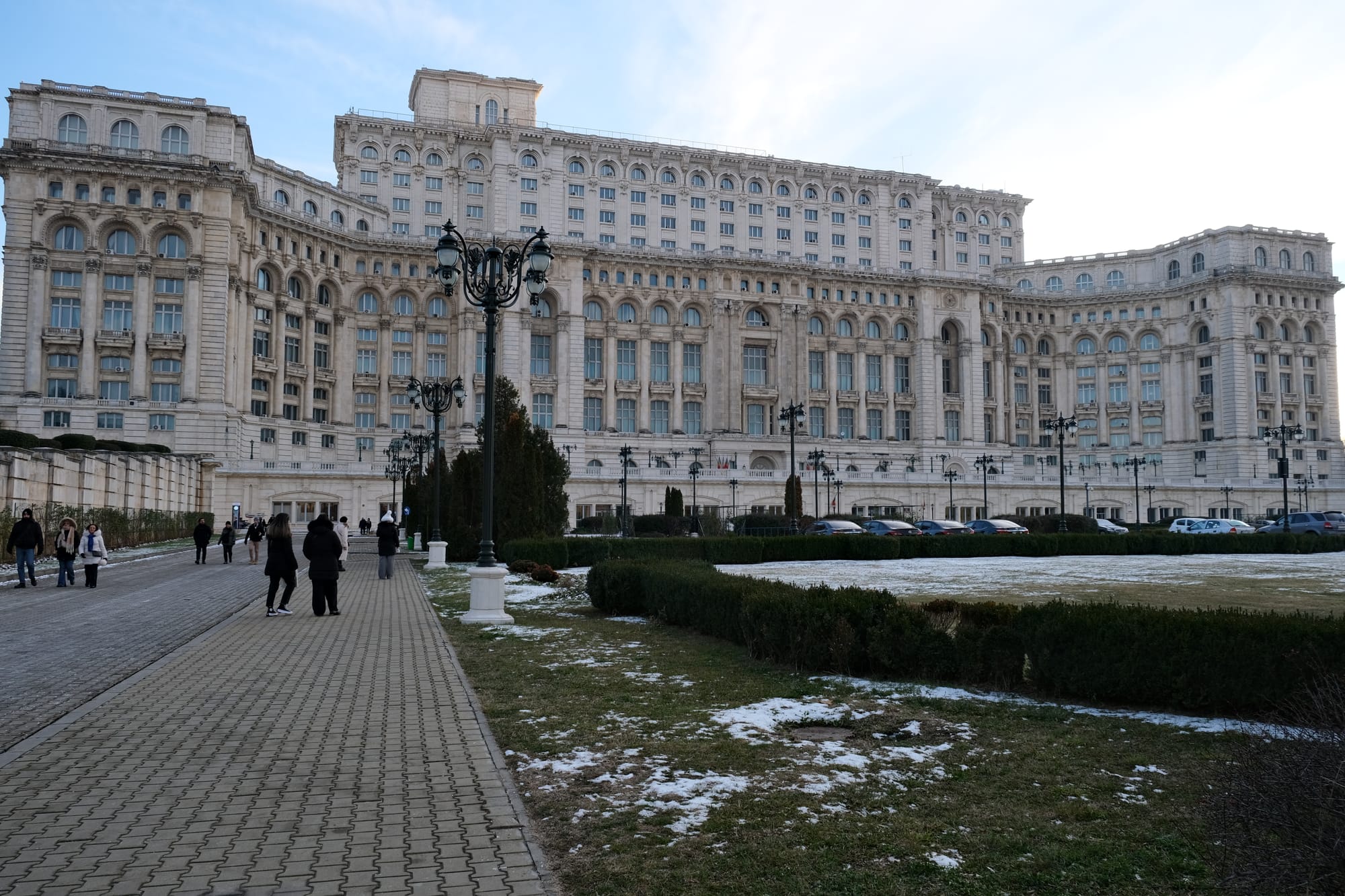
The Palace of the Parliament is the administrative centre for Romania and hosts the Romanian Parliament. It is the heaviest building in the world (if you ignore the pyramids) and is the second largest administrative building. It was the grand vision of the communist dictator Nicolae Ceaușescu, who commissioned its construction as a monumental showcase of the Romanian state. After the revolution the building was seen as a reminder of the communist regime and some wanted to tear it down, but apparently it was cheaper to complete the building than it would have been to demolish it.
The building is known for its ornate interior but, because it is in active use by the government, the only way to see the inside is on a tour. I went on a Sunday (the 14th of January) and the building was quiet with only other tour groups present.
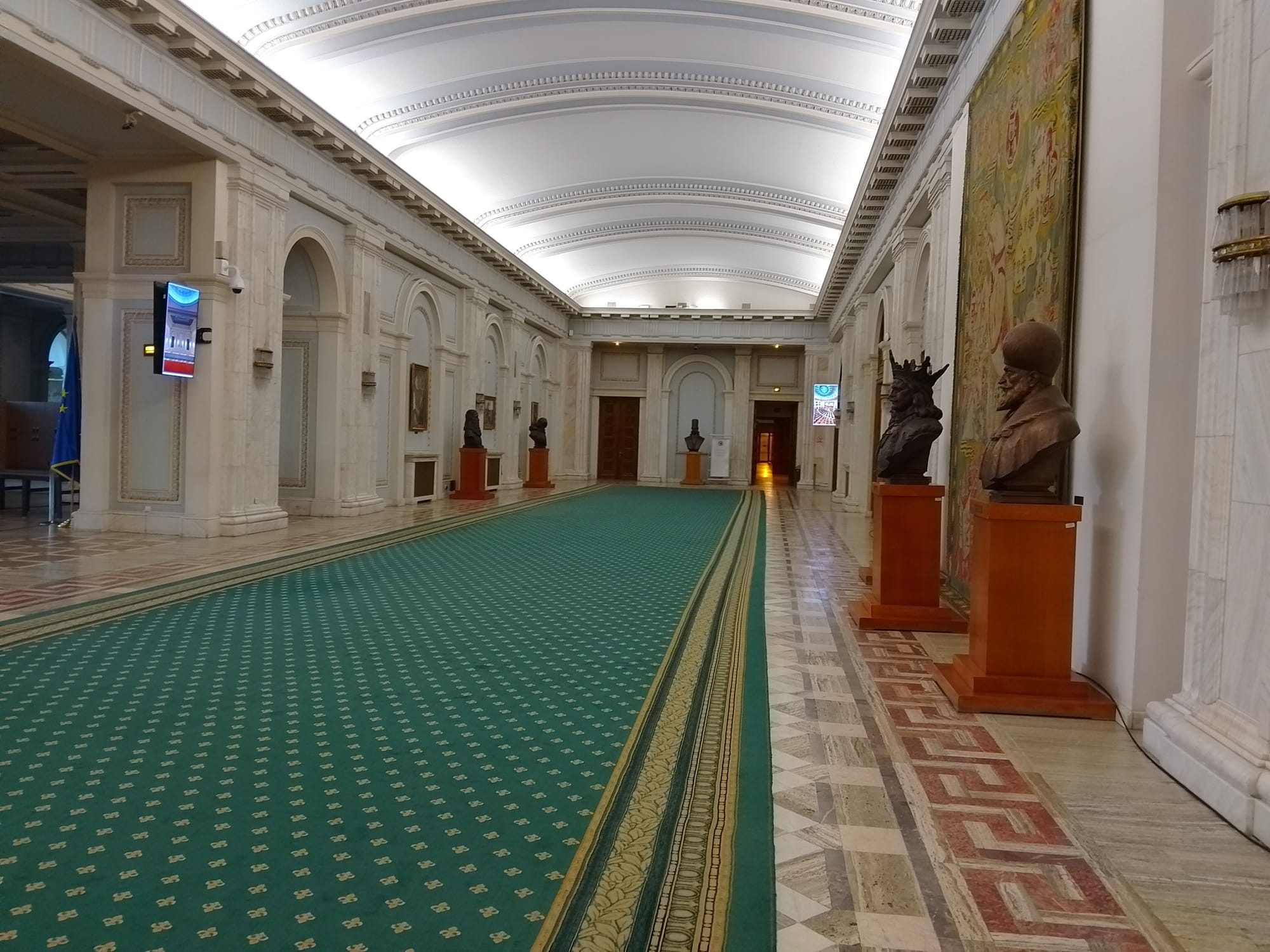
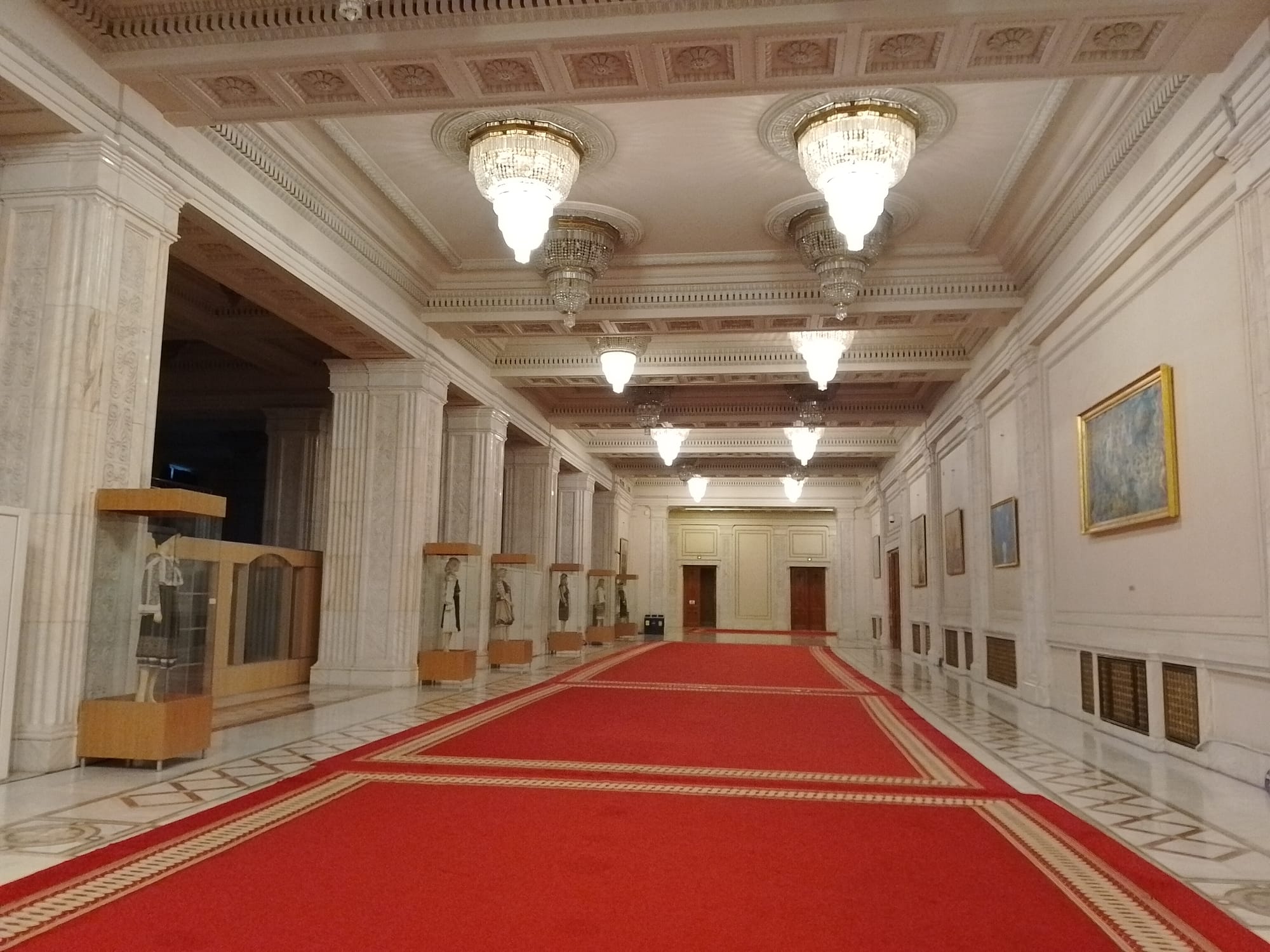
These images were from two of the halls we used to get deeper into the structure.
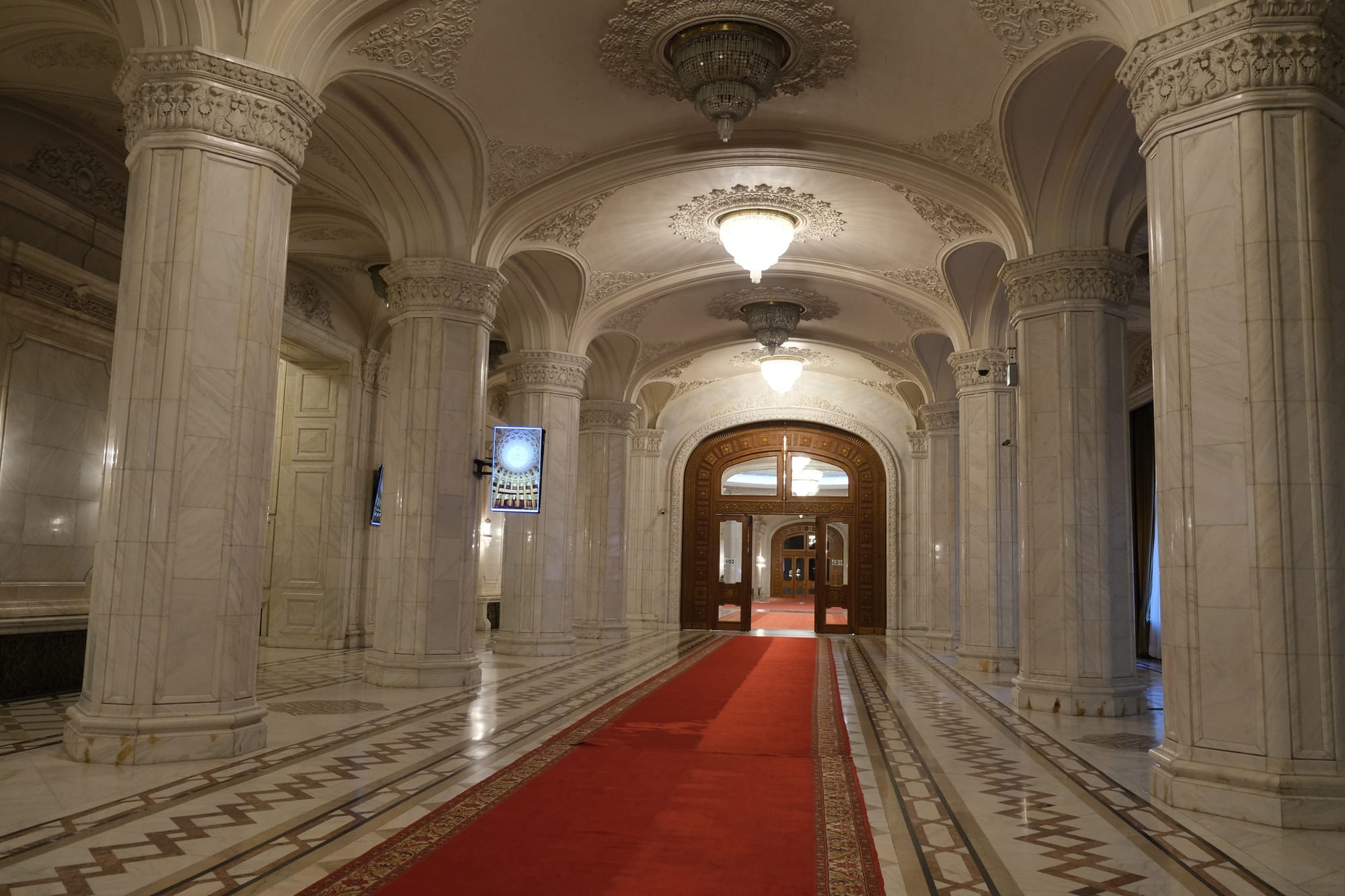
This is a large corridor that goes towards the large centre rooms of the palace. Similar to the Presidential palace in Abu Dhabi, many of the walls and floor were made with inlaid marble.
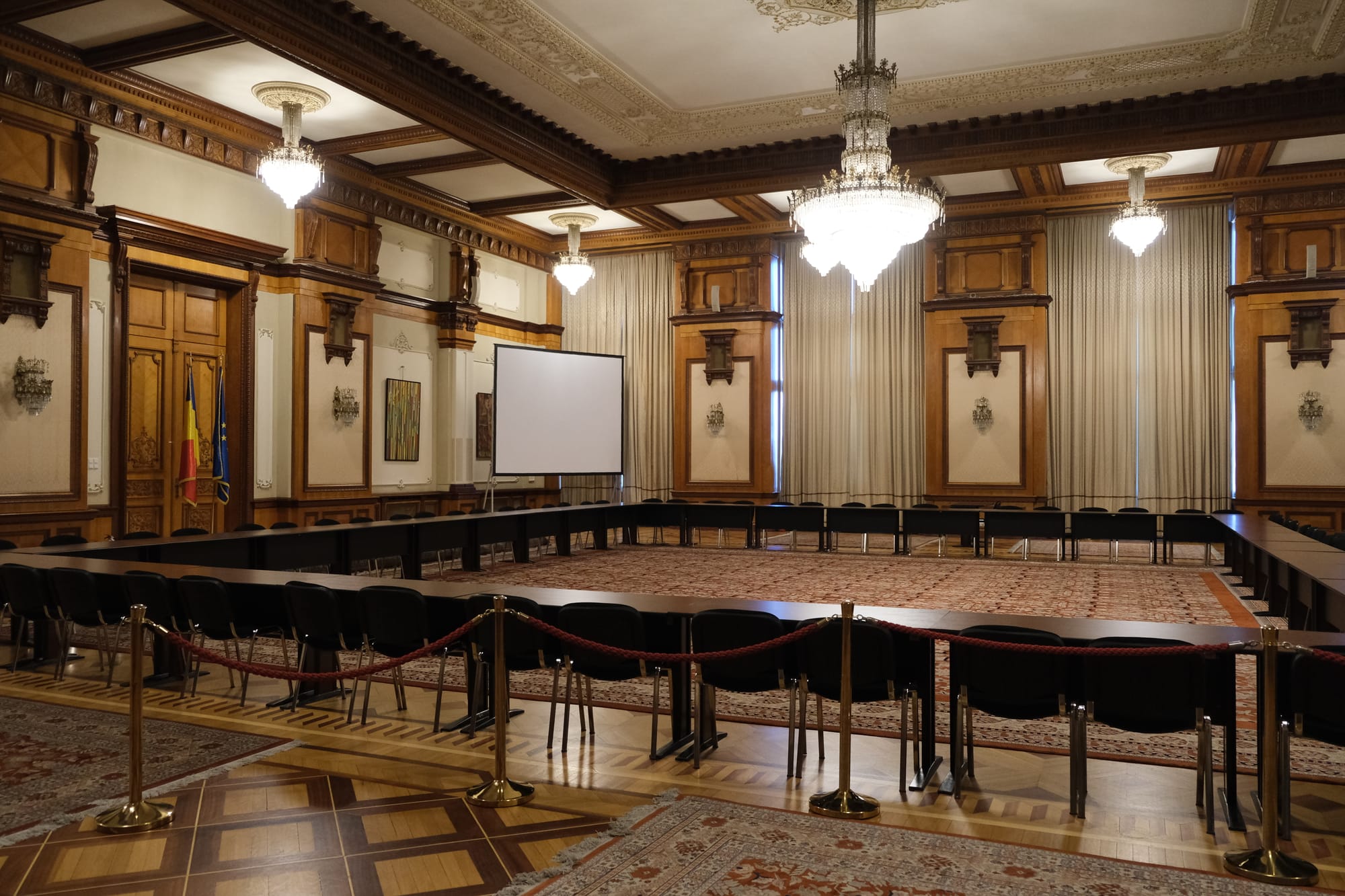
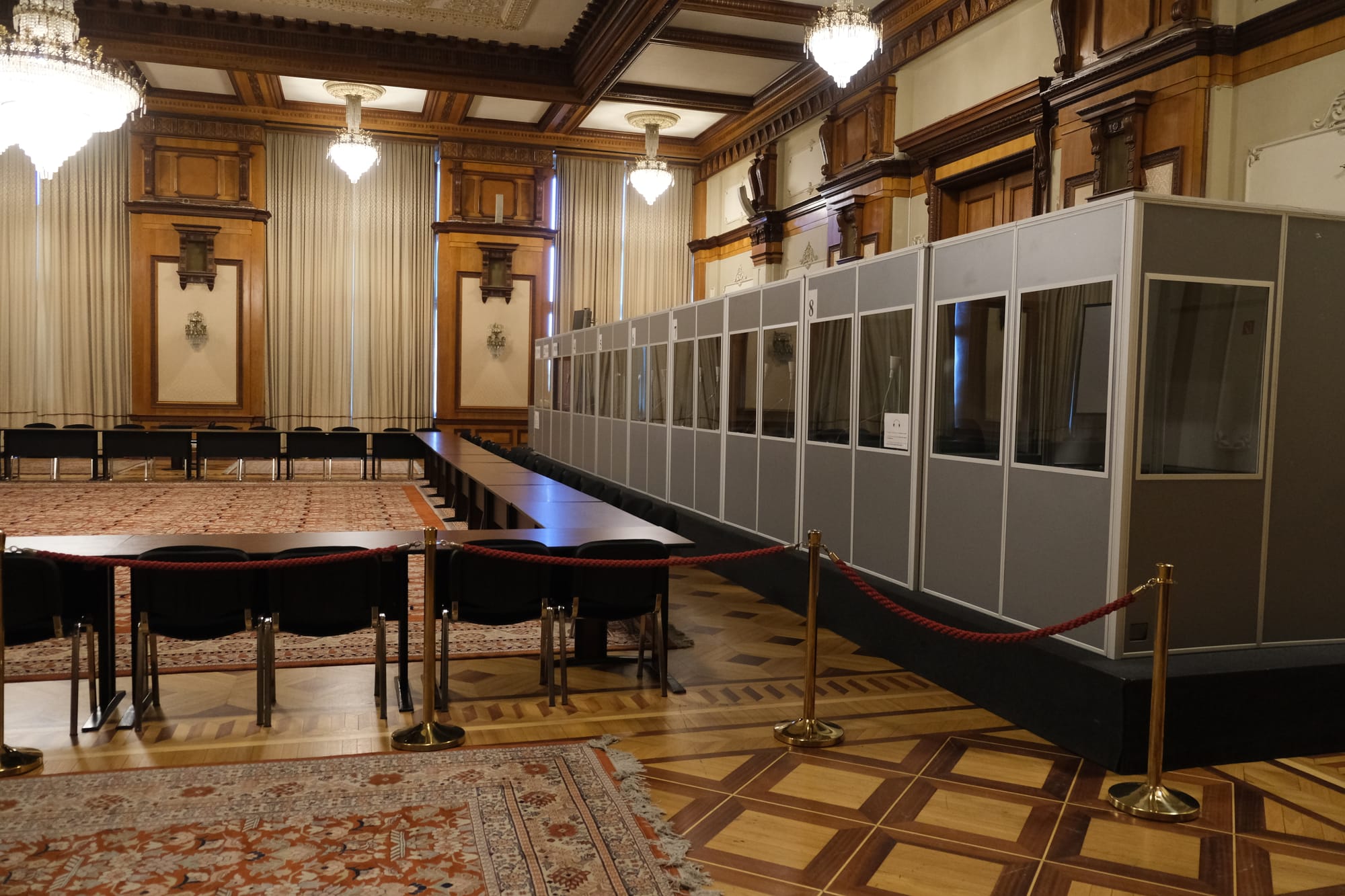
This conference room was very ornate with lots of wood in the decor. This room, and others like it, had a set of boxes where the translators would sit. I imagine that translators would speak into radio sets that members of the conference can listen to with an earpiece.

This was the central ballroom of the palace. It was the largest room we saw, absolutely huge with a tinted glass roof. On either end of the room were two large empty walls that were designed to host the portraits of the Romanian dictator and his wife, but this never happened as the dictator was over thrown before the palace was opened.
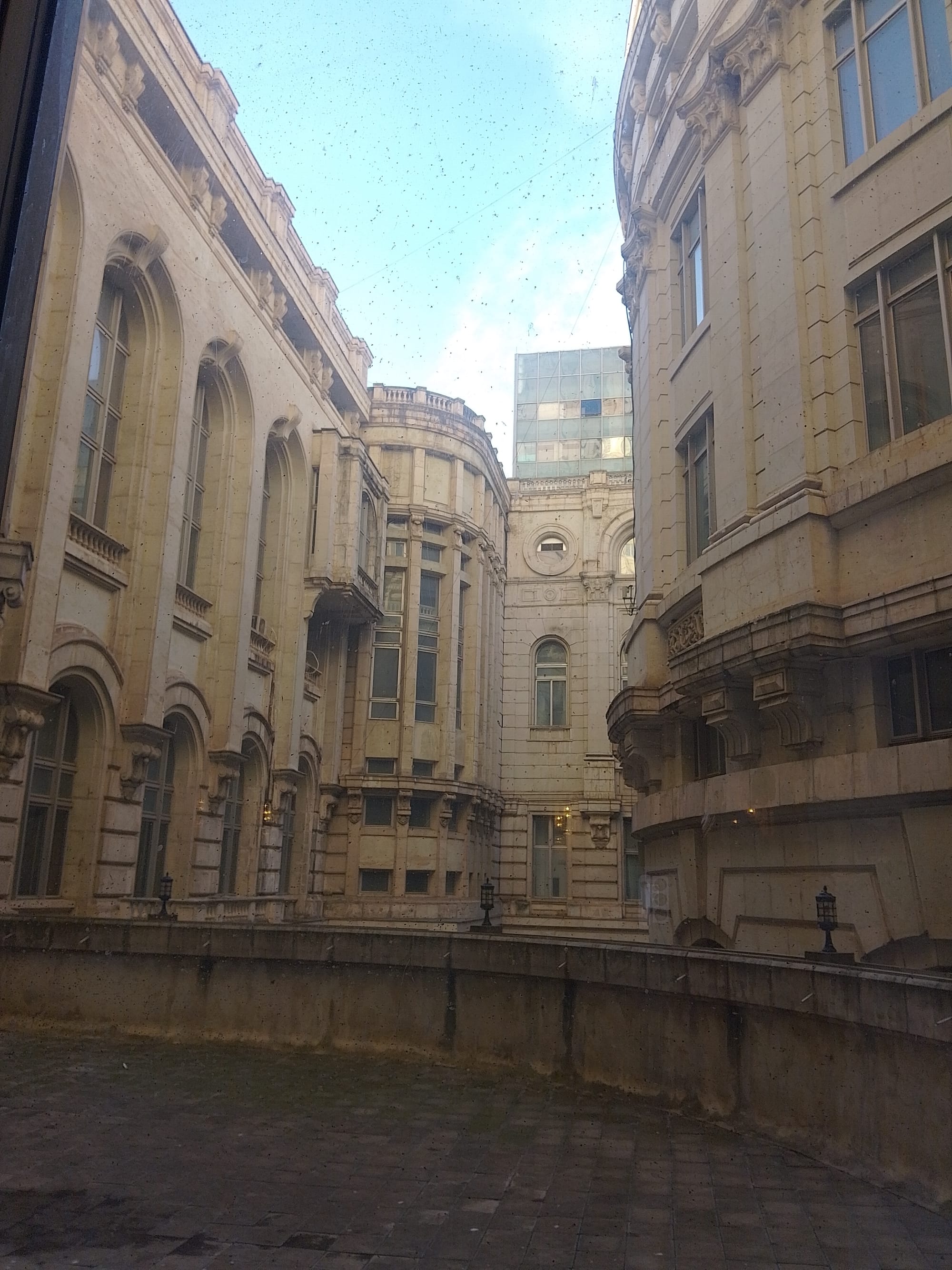
I took this picture looking out a window in one of the corridors of the building. I found it so interesting that the complex had all these interior courtyards, which I guess makes sense as this allows rooms deep within the building to have windows for natural light.
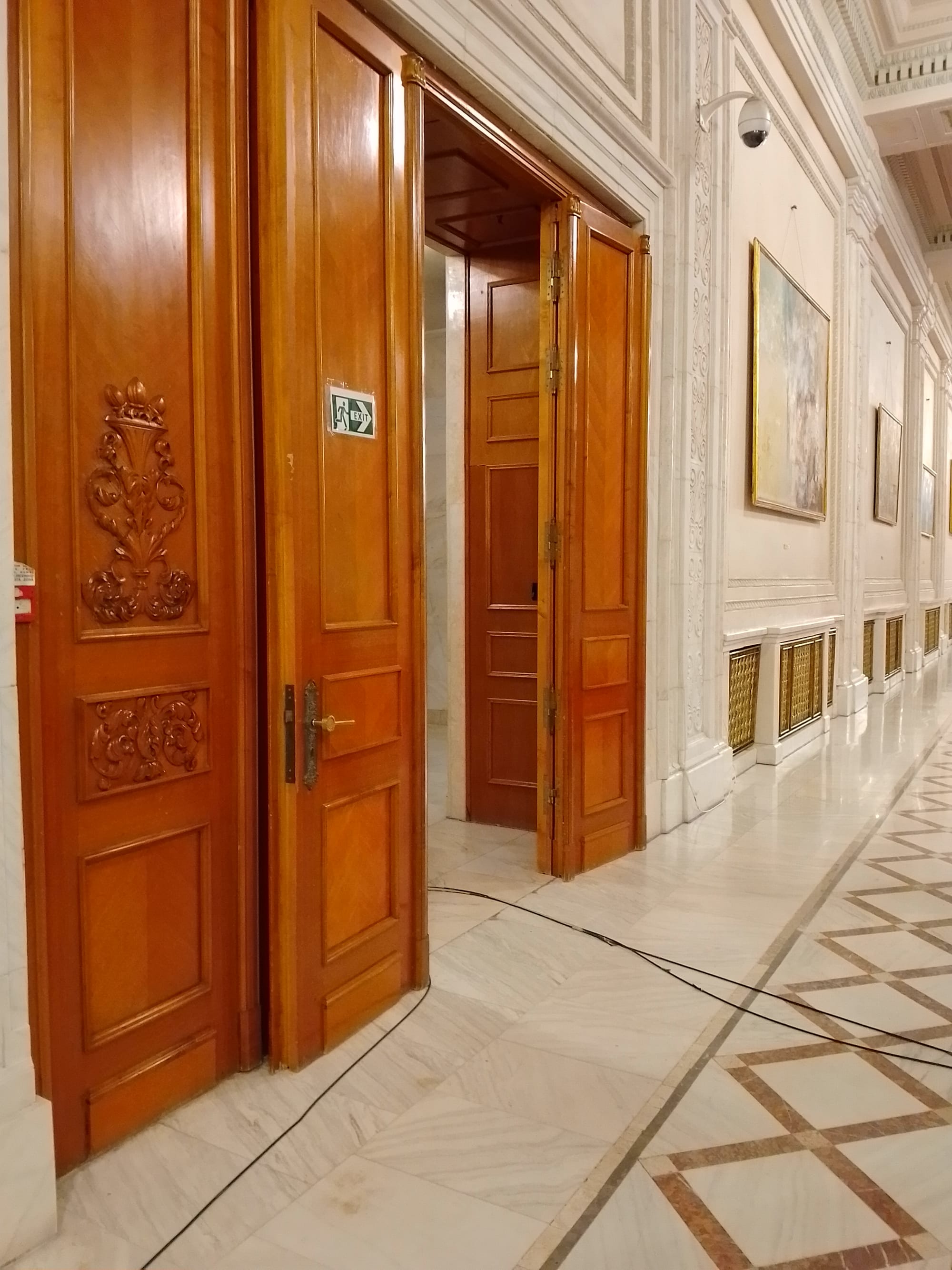
Something I did find interesting was how some of the infrastructure seems to have been added into the building after it was finished. There were a few doors like this that just had cables running across the floor. I would have thought that these kinds of cables should be built into the walls, or at least clipped neatly away. Maybe it was done this way to save money, which does speak a lot about the countries history as the Palace of Parliament was hugely expensive, but the regime spent all the money in the wrong place, trying to make the building pretty rather than functional.
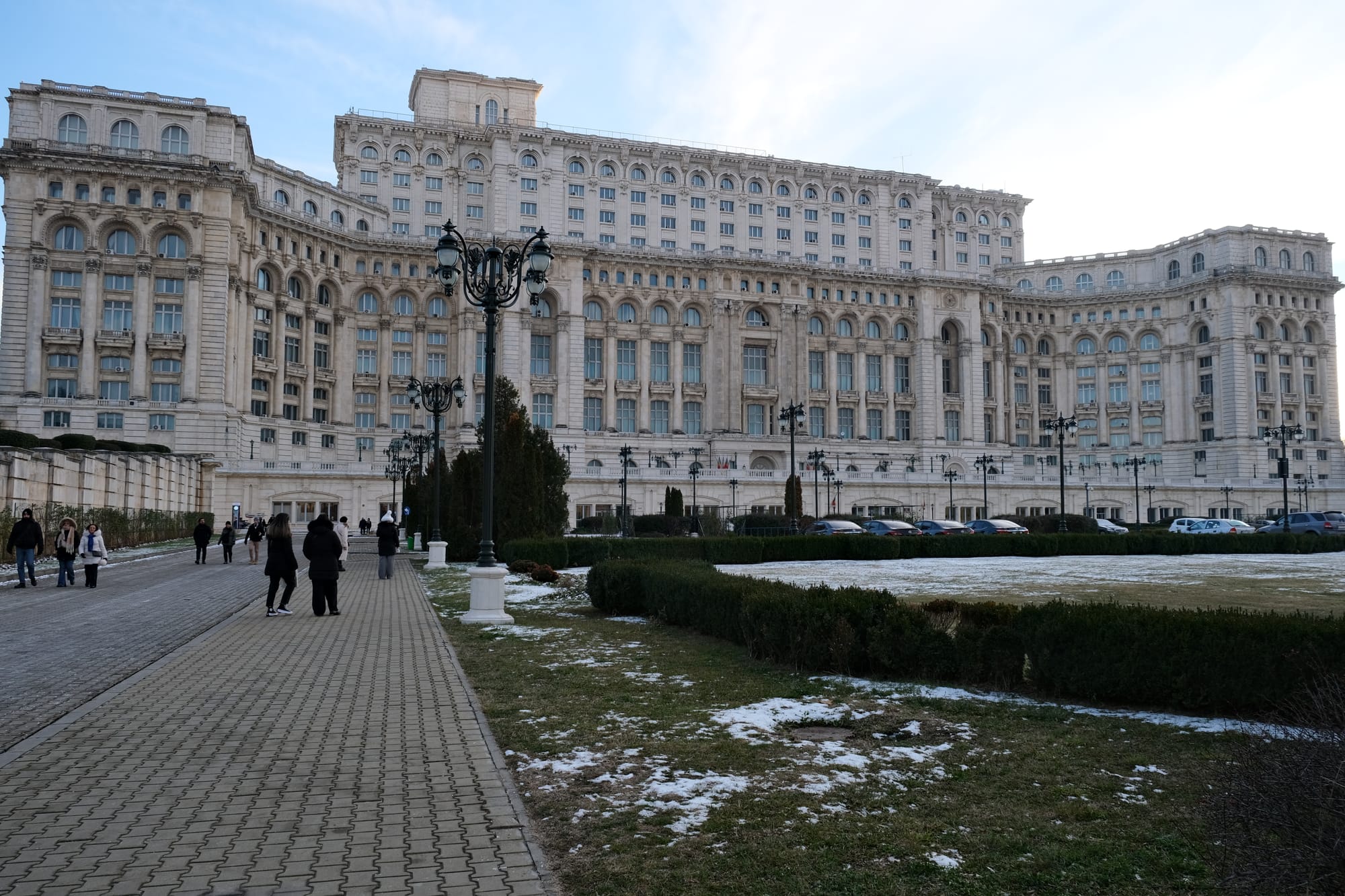
I really struggled trying to take a picture of the Palace of the Parliament from the outside. It is just so big, and there is no vantage point nearby to view it from, so there aren't really any good angles to capture it. With the above picture I intentionally just barely fit the palace into the frame. I wanted to capture the dominating sense that this building has on anyone who approaches it.
Trajan's Column
I visited the National Museum of Romanian History before going to the Palace of the Parliament. This museum had a number of galleries with many artifacts from Romanian history. My favourite gallery was the one that featured Trajan's column.
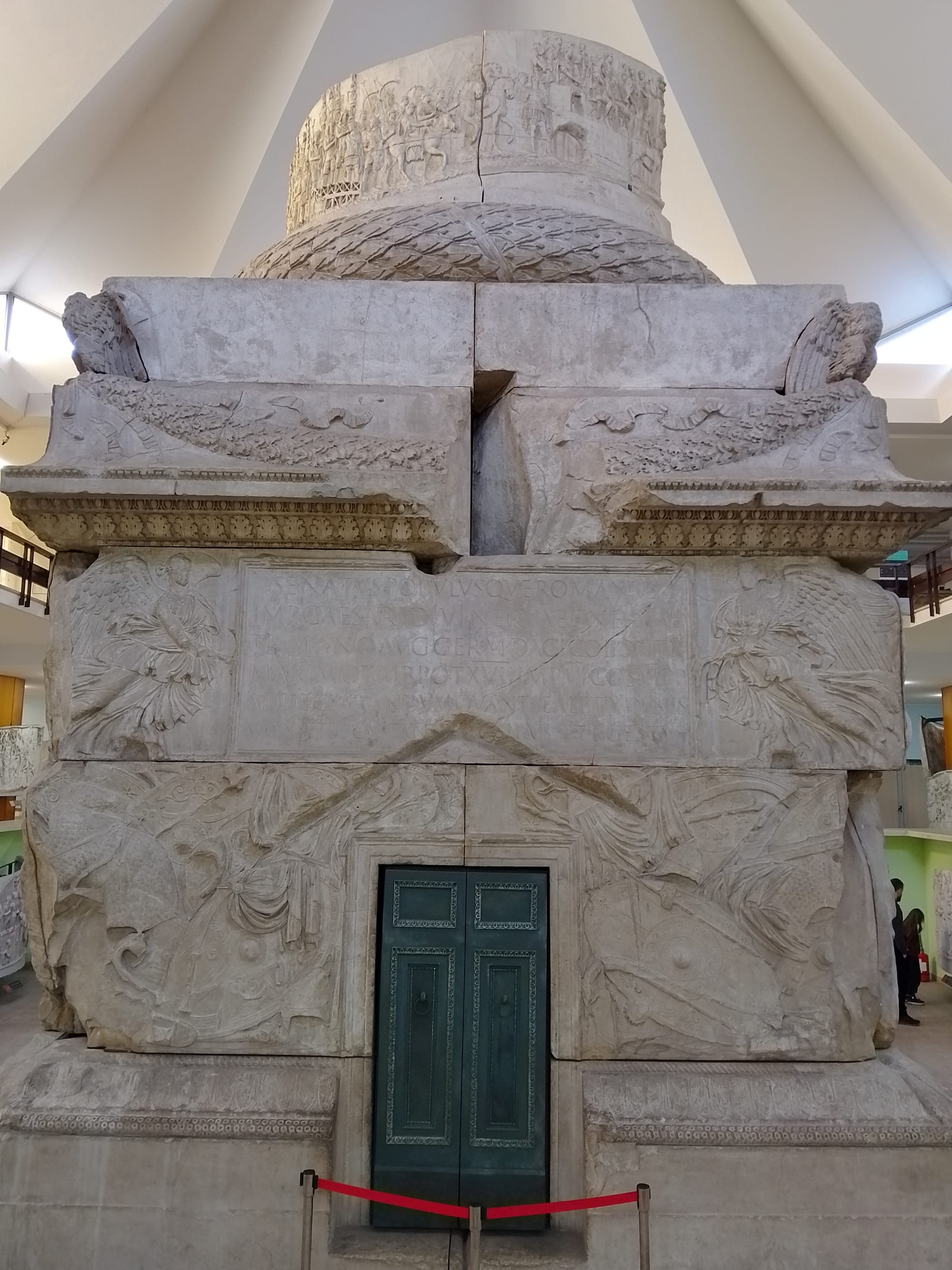
The National Museum of Romanian History had a plaster cast of Trajan's column in an exhibit all to itself. The original column stands in Rome and was commissioned by the Roman senate to commemorate the victories of emperor Trajan in the Dacian wars. The Dacians were the people group who lived in the area of Romania during the Roman Empire and they fought against the Romans bravely. The people of modern Romania trace their heritage back to both the Dacians and the Romans.

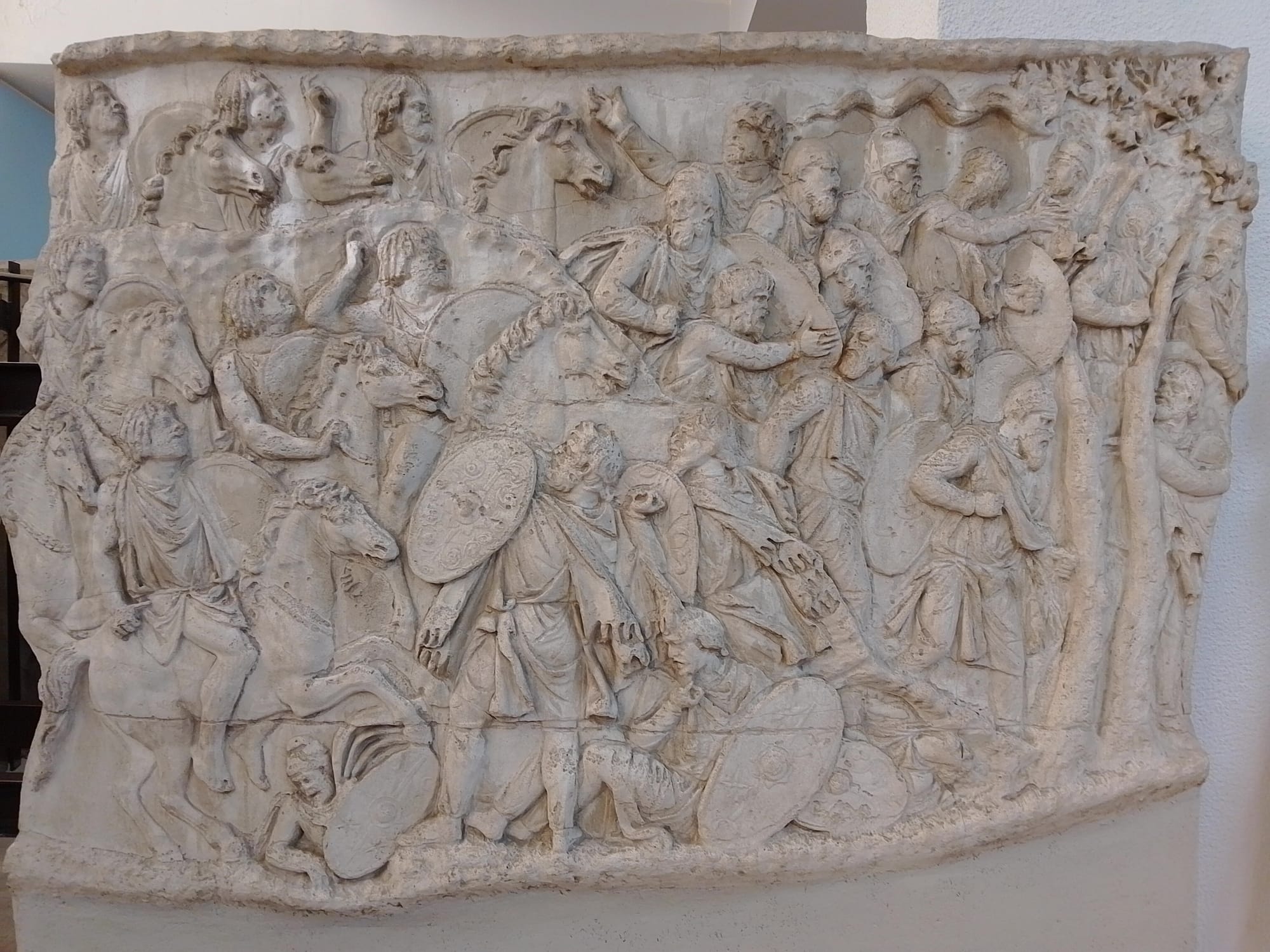
The column has a relief artwork spiraling all around it, detailing the history of the Dacian wars. This artwork can be difficult to see on the actual column in Rome because most of it is up in the air, but here in the museum the column was effectively split into pieces and all the pieces displayed at eye level so anyone can easily inspect it. Also these plaster casts made in the late 18th and early 19th century are apparently now more detailed in places compared to the original column because the original has faced continued damage from acid pollution.
I found these reliefs really interesting, a few of them had battle scenes but many others included scenes from all sorts of aspects of campaign life, such as building forts or taking care of the wounded. I so wish I could have stayed and study every single scene but I didn't have the time, it is definitely a place I would want return to.

This is the best picture I have that shows how the gallery was arranged. The base of the column took up the centre of the room, while all the pieces of the column artwork were arranged throughout the room all around it. I could have easily spent a couple hours investigating every single frame.
Orthodox Church
The previous day I was walking near the old town of Bucharest and I came across the New Saint George Church. Its an 18th century orthodox church and it was the mostly ornate church I have seen in Bucharest, with extensive murals.
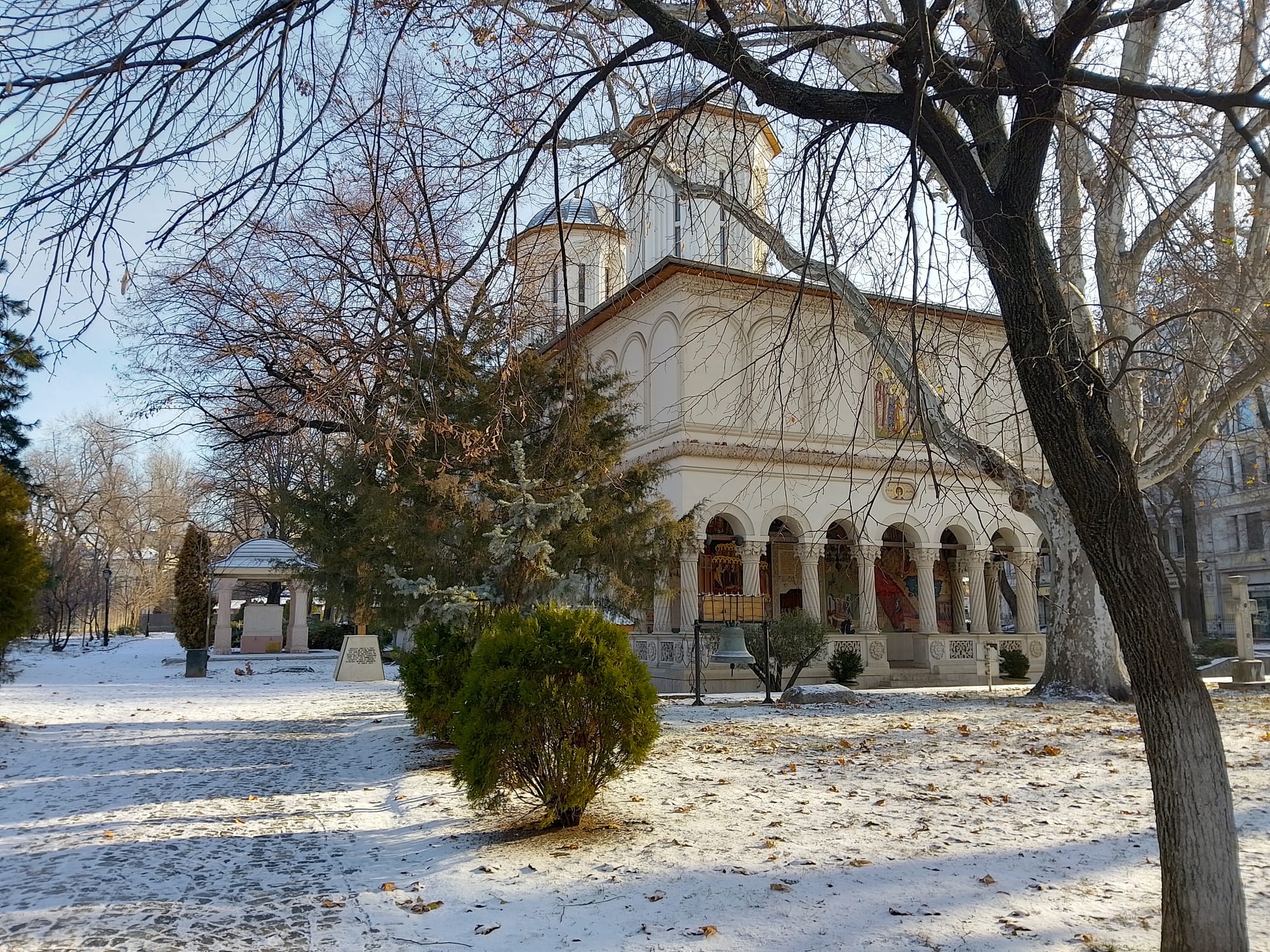
View looking towards the front of the church.
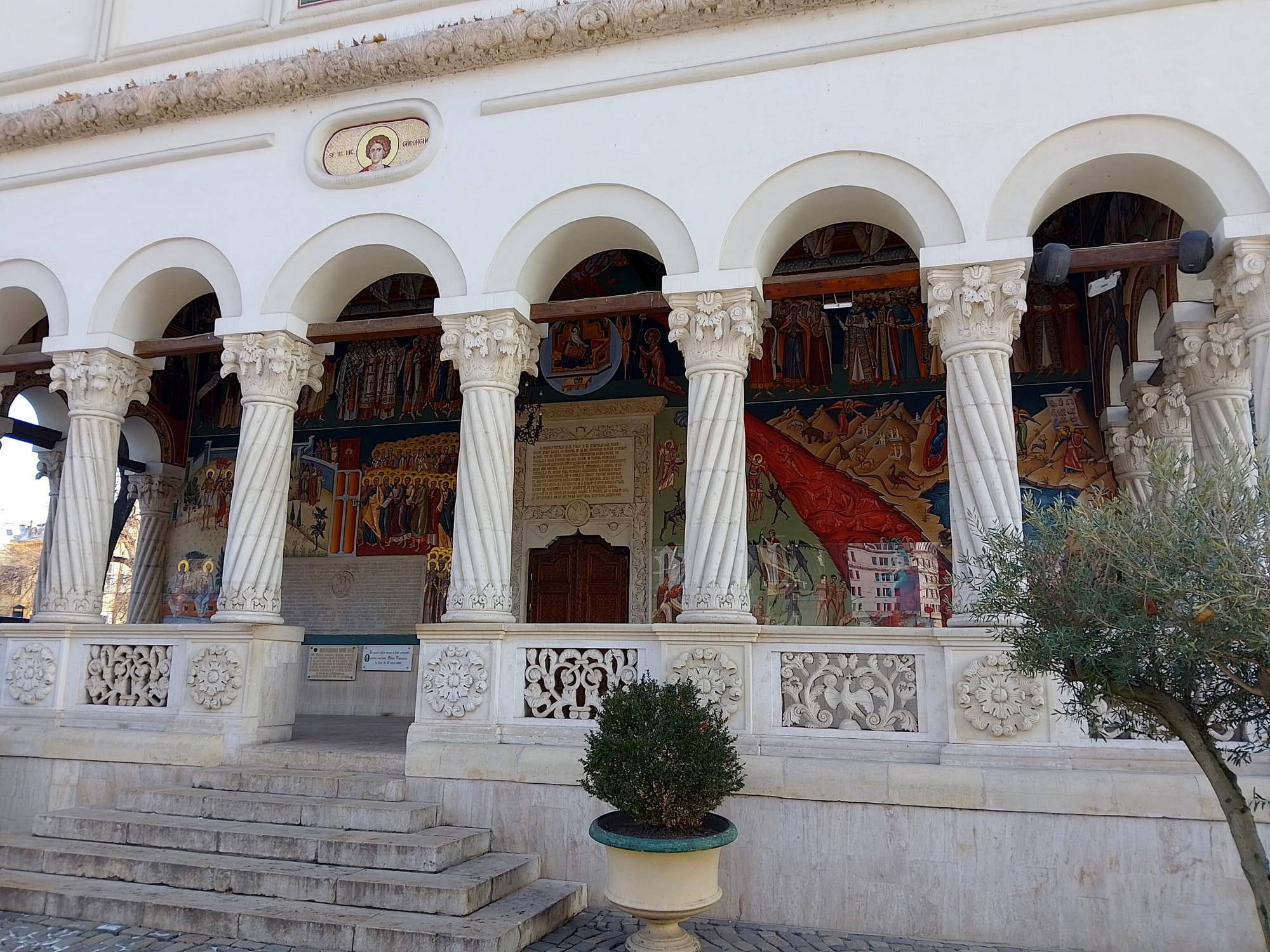
The church entryway. From here you can see the incredibly detailed murals. I had just been walking past but when I saw this I had to get a closer look.
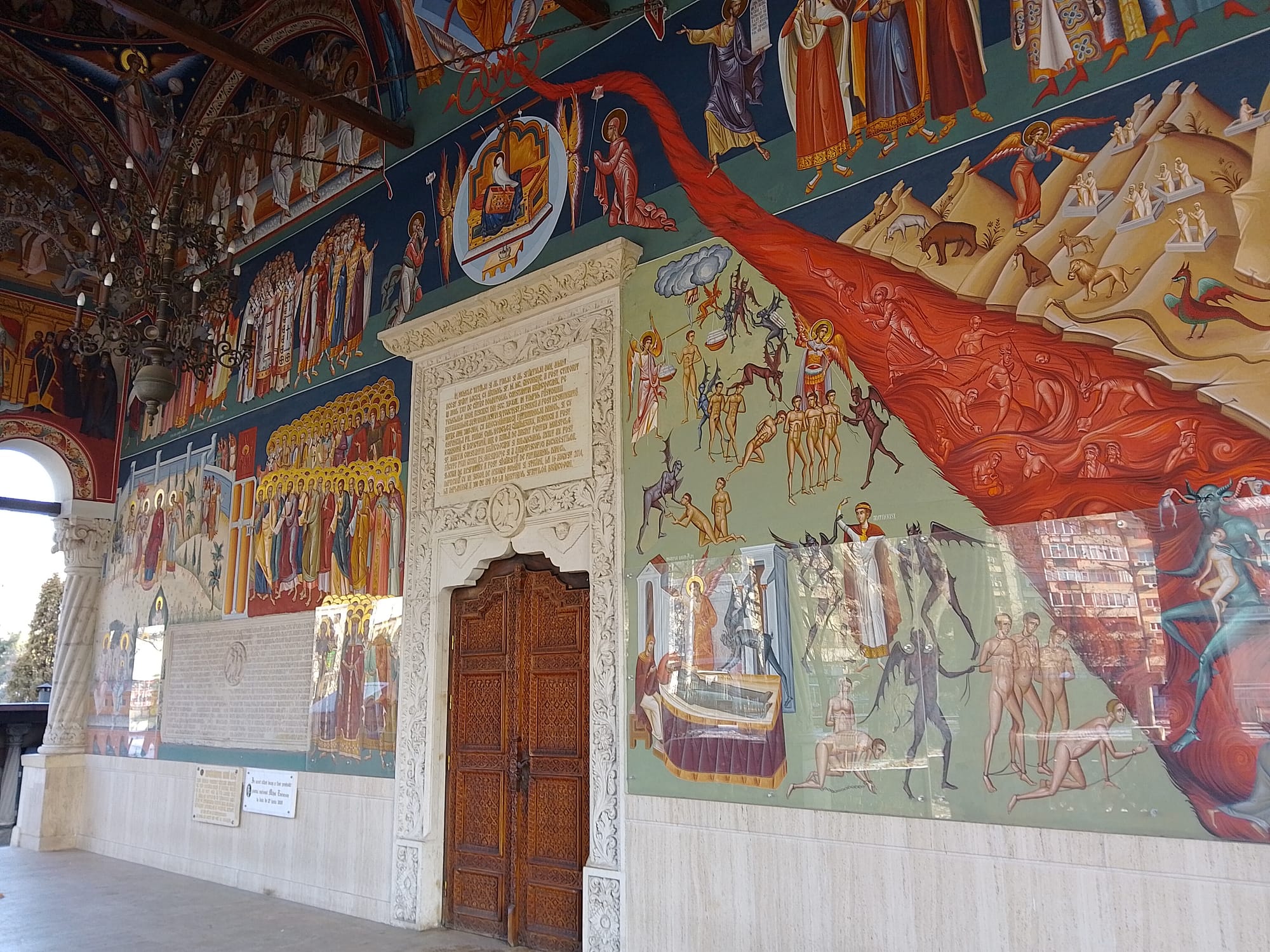
A close up of the door with the murals. I don't know anything about orthodox theology so I can't say what the images are depicting, but it looked cool.
Originally I thought this post would be really quick as I hadn't taken many photos at the Palace of the Parliament, but I added in the bonus sections of Trajan's column and the orthodox church. I liked those pictures enough that I wanted to share them but there wasn't enough there for their own post, so I included it in this one.
Overall it was a great weekend where I was able to further explore Bucharest.
Thanks for reading – Edward
Written 8th of February 2024
Please comment below if you have any questions or thoughts on any pictures.